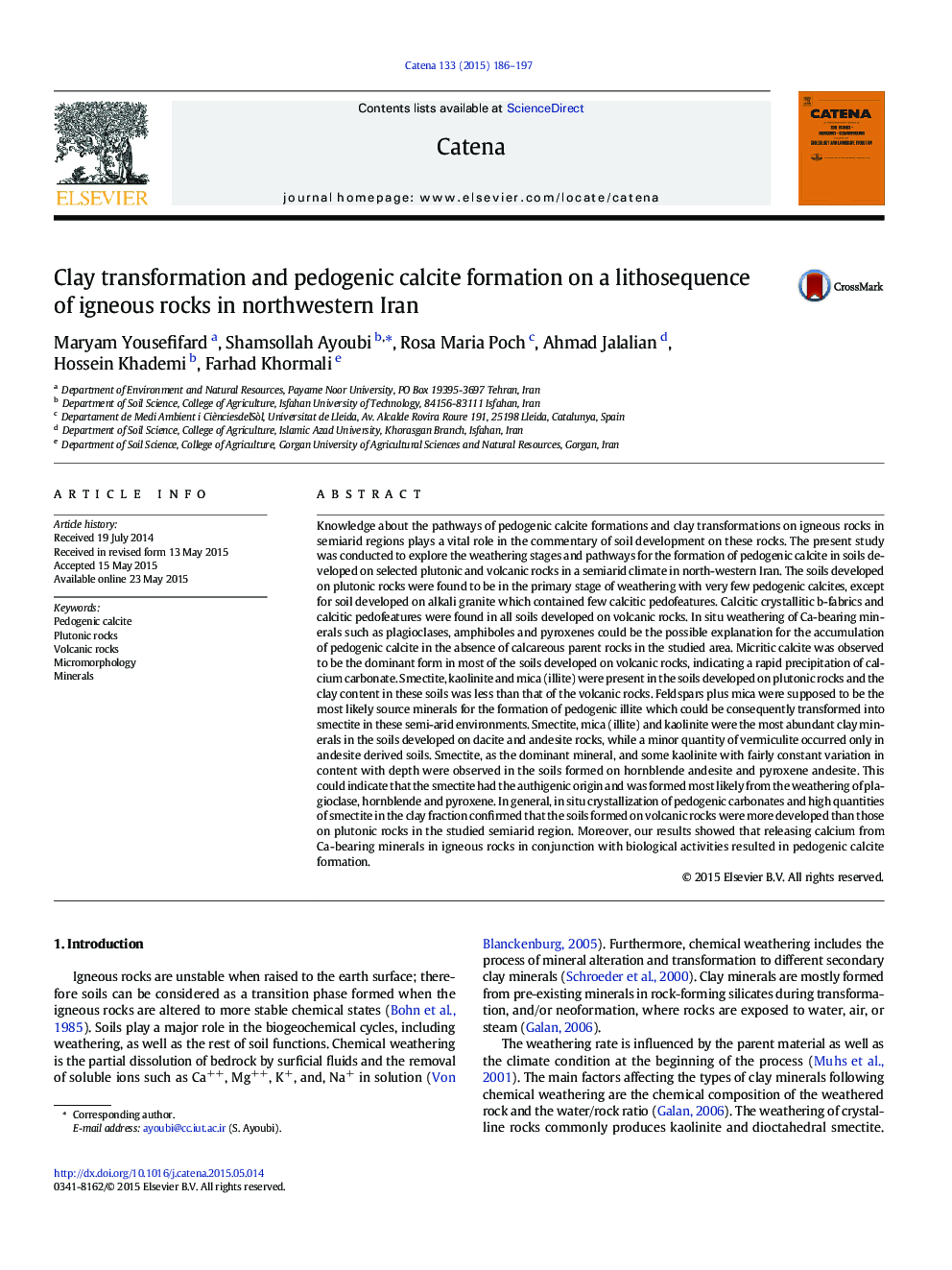| کد مقاله | کد نشریه | سال انتشار | مقاله انگلیسی | نسخه تمام متن |
|---|---|---|---|---|
| 4571035 | 1629219 | 2015 | 12 صفحه PDF | دانلود رایگان |
• Micritic calcite indicates the rapid calcite precipitation and relatively young soils.
• In situ Ca-baring mineral weathering induced calcite formation in igneous rocks.
• In situ weathering of primary minerals (such as Ca-plagioclase) caused smectite formation.
Knowledge about the pathways of pedogenic calcite formations and clay transformations on igneous rocks in semiarid regions plays a vital role in the commentary of soil development on these rocks. The present study was conducted to explore the weathering stages and pathways for the formation of pedogenic calcite in soils developed on selected plutonic and volcanic rocks in a semiarid climate in north-western Iran. The soils developed on plutonic rocks were found to be in the primary stage of weathering with very few pedogenic calcites, except for soil developed on alkali granite which contained few calcitic pedofeatures. Calcitic crystallitic b-fabrics and calcitic pedofeatures were found in all soils developed on volcanic rocks. In situ weathering of Ca-bearing minerals such as plagioclases, amphiboles and pyroxenes could be the possible explanation for the accumulation of pedogenic calcite in the absence of calcareous parent rocks in the studied area. Micritic calcite was observed to be the dominant form in most of the soils developed on volcanic rocks, indicating a rapid precipitation of calcium carbonate. Smectite, kaolinite and mica (illite) were present in the soils developed on plutonic rocks and the clay content in these soils was less than that of the volcanic rocks. Feldspars plus mica were supposed to be the most likely source minerals for the formation of pedogenic illite which could be consequently transformed into smectite in these semi-arid environments. Smectite, mica (illite) and kaolinite were the most abundant clay minerals in the soils developed on dacite and andesite rocks, while a minor quantity of vermiculite occurred only in andesite derived soils. Smectite, as the dominant mineral, and some kaolinite with fairly constant variation in content with depth were observed in the soils formed on hornblende andesite and pyroxene andesite. This could indicate that the smectite had the authigenic origin and was formed most likely from the weathering of plagioclase, hornblende and pyroxene. In general, in situ crystallization of pedogenic carbonates and high quantities of smectite in the clay fraction confirmed that the soils formed on volcanic rocks were more developed than those on plutonic rocks in the studied semiarid region. Moreover, our results showed that releasing calcium from Ca-bearing minerals in igneous rocks in conjunction with biological activities resulted in pedogenic calcite formation.
Journal: CATENA - Volume 133, October 2015, Pages 186–197
